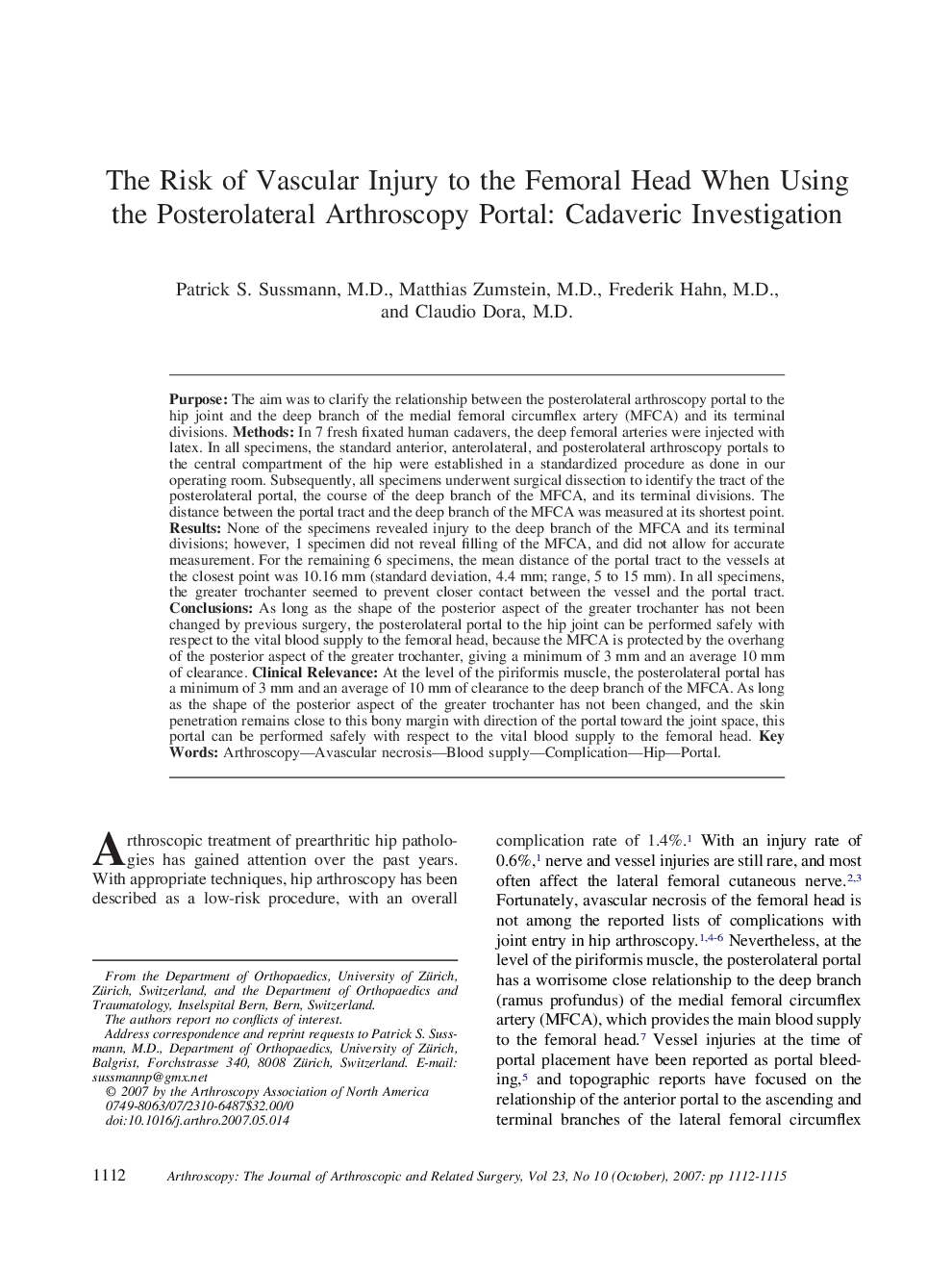| Article ID | Journal | Published Year | Pages | File Type |
|---|---|---|---|---|
| 4045577 | Arthroscopy: The Journal of Arthroscopic & Related Surgery | 2007 | 4 Pages |
Purpose: The aim was to clarify the relationship between the posterolateral arthroscopy portal to the hip joint and the deep branch of the medial femoral circumflex artery (MFCA) and its terminal divisions. Methods: In 7 fresh fixated human cadavers, the deep femoral arteries were injected with latex. In all specimens, the standard anterior, anterolateral, and posterolateral arthroscopy portals to the central compartment of the hip were established in a standardized procedure as done in our operating room. Subsequently, all specimens underwent surgical dissection to identify the tract of the posterolateral portal, the course of the deep branch of the MFCA, and its terminal divisions. The distance between the portal tract and the deep branch of the MFCA was measured at its shortest point. Results: None of the specimens revealed injury to the deep branch of the MFCA and its terminal divisions; however, 1 specimen did not reveal filling of the MFCA, and did not allow for accurate measurement. For the remaining 6 specimens, the mean distance of the portal tract to the vessels at the closest point was 10.16 mm (standard deviation, 4.4 mm; range, 5 to 15 mm). In all specimens, the greater trochanter seemed to prevent closer contact between the vessel and the portal tract. Conclusions: As long as the shape of the posterior aspect of the greater trochanter has not been changed by previous surgery, the posterolateral portal to the hip joint can be performed safely with respect to the vital blood supply to the femoral head, because the MFCA is protected by the overhang of the posterior aspect of the greater trochanter, giving a minimum of 3 mm and an average 10 mm of clearance. Clinical Relevance: At the level of the piriformis muscle, the posterolateral portal has a minimum of 3 mm and an average of 10 mm of clearance to the deep branch of the MFCA. As long as the shape of the posterior aspect of the greater trochanter has not been changed, and the skin penetration remains close to this bony margin with direction of the portal toward the joint space, this portal can be performed safely with respect to the vital blood supply to the femoral head.
